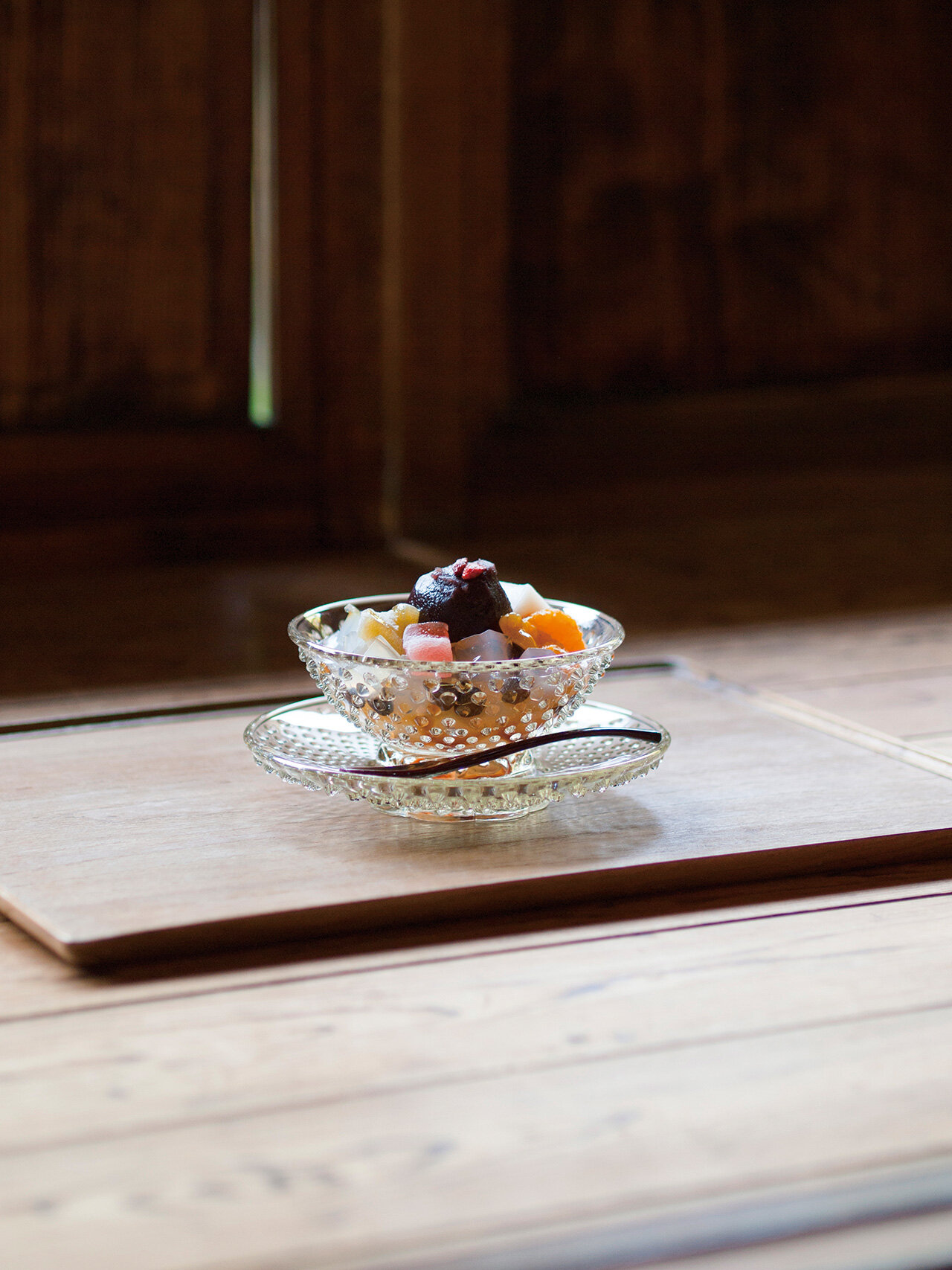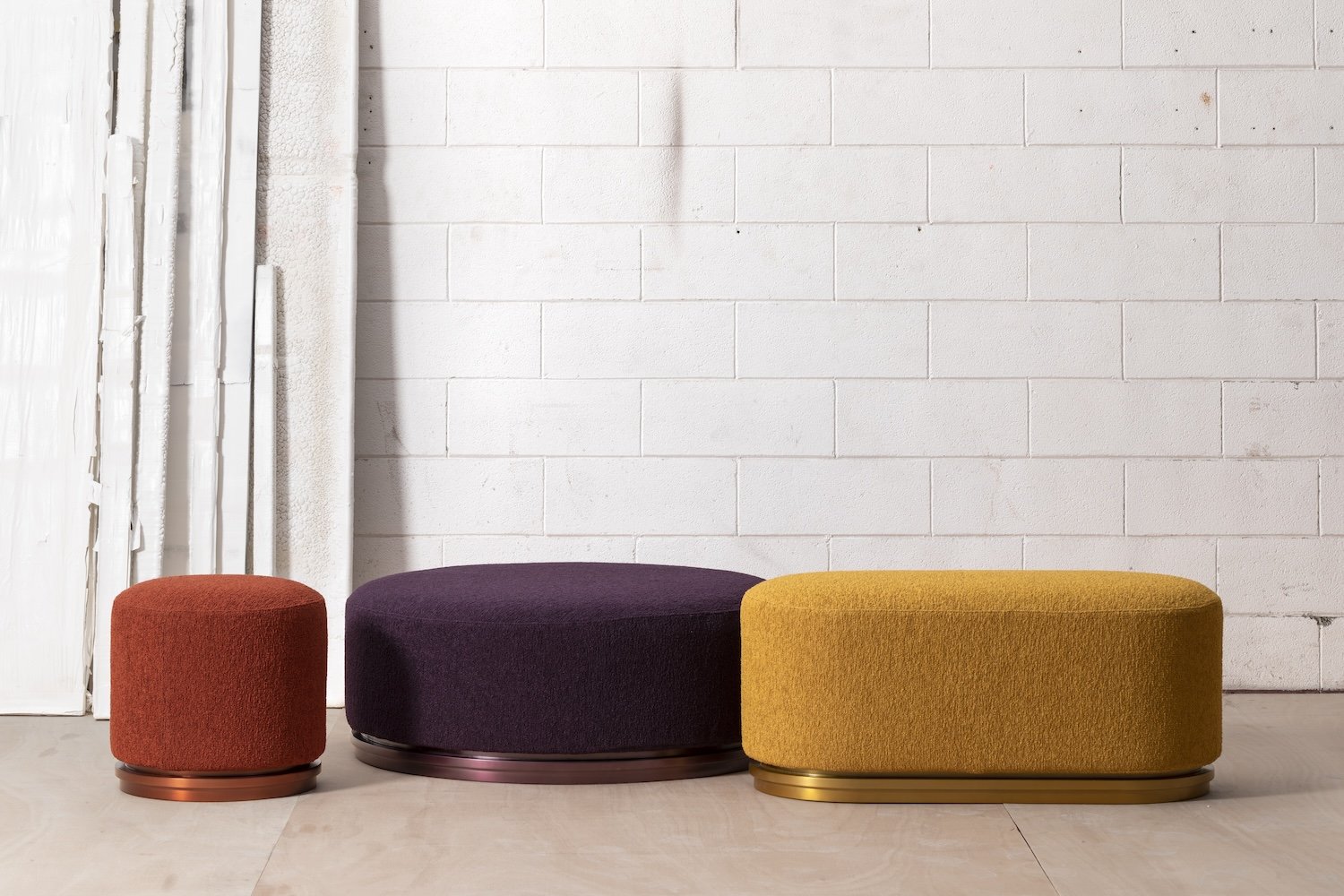HIROTA GLASS || Tokyo's Oldest Glassmaker Since 1899

It takes 10 years to train an artisan to Hirota Glass’ standards.
This may explain why this celebrated Japanese brand has just been recognized with the Good Design Long Life Design Award. Their soy sauce dispenser, this is “the first ground glass soy sauce bottle” has been awarded the Long Life Design Award. Originally designed in 1976, the team set out to resolve the issue of dripping soy sauce from screw-type lids of glass soy sauce dispensers that were an issue with mainstream designs at the time.
It comes as no surprise that Hirota Glass’ soy sauce dispenser instantly became a popular product, and continues to be a celebrated product in tableware design. This beautiful, simple, and functional product is handcrafted by Hirota Glass’ artisans in Tokyo, with the goal of providing glass tableware that will last you a lifetime.
BRAND STORY
Founded in 1899, Hirota Glass is the oldest glassmaker in Tokyo. The manufacturing of glass in Japan goes back to the Edo period (1603-1867). During the Meiji period (1868-1912), the Japanese government established and operated the Shinagawa Glass Factory. After that, glass factories opened one after another in downtown Tokyo. Hirota Glass was among the earliest. Glassmaking in Tokyo flourished and fused traditional European techniques with the soul of Japanese aesthetics.
Mass production of glassware became mainstream post World War II, yet Hirota Glass continues to commit to producing only handcrafted glassware, staying with the company creed, “We want to make products possessing warmth and appeal to people’s sensibility.”
Hirota artisans inherit traditional handicraft techniques such as Edo Kriko, finely cut glass, and Edo Glass, the local Tokyo style.
The company’s Founder Kinta Hirota opened Hirota Glass Shop in Shiba-tamachi, Tokyo in 1899, and established Koto Glass Factory in Honjo-Yokokawa, Tokyo, to manufacture glass tableware, containers, and lampshades. This series of commitments helped to advance artisanal glassmaking for generations.
Taisho Roman glassware for drinking
While the skilled craftsmen still create glass tableware, the company is also reproducing traditional glassware for drinking. The team shares that “to hand down the once-forgotten craftsmanship and skills to the next generation – we believe that is a mission only we, Hirota Glass, working solely with glass for over 100 years, can achieve.”
They point to the Taisho Roman Series as one example. The designs are reproductions of glassware once called “Japanese shaved ice” with opalescent-colored patterns, widely made from the Taisho (1912-1926) to the Showa (1926-1989) period. The glass is molded using a technique called the Bone Ash Aburidashi Technique and Hirota Glass is the only company still utilizing this technique. It is a type of Wa (Japanese) glass with traditional patterns, featured in “The Mark of Beauty,” an art program on NHK, the national Japanese broadcasting network.
“To hand down the once-forgotten craftsmanship and skills to the next generation – we believe that is a mission only we, Hirota Glass, working solely with glass for over 100 years, can achieve.”
The lean team consists of 4 Edo Kiriko artisans, and it is said that it takes 10 years to master all the processes and certain techniques of Edo Kiriko. Although today you can find Hirota Glass products around the world, the annual production volume is just 100,000 units (including all products and not just Edo Kiriko products). With a small team of dedicated artisans, Hirota Glass rarely creates new collections, and at most will release a new collection once per year, provided the new opportunity aligns with the values of the world of Hirota Glass.
Needless to say, Hirota Glass designs are coveted houseware items, and we were intrigued by the charming and elegant glassware that appear to dance in the sunlight as we passed by a shop window. Upon further research, we had discovered the history of Hirota Glass and reached out to learn more about the story behind this fascinating, historic brand originating in Tokyo, Japan.
We had the pleasure of catching up with the Hirota Glass team to explore the brand’s history, the passion to create timeless designs, and how the company has evolved to stay true to its roots amidst changing consumer needs.
H: Hirota Glass
P: Pendulum Magazine
P: Can you introduce us to the different handcrafted glassware styles made by Hirota Glass artisans?
H: Yes, of course. There are 3 main styles including Edo Kiriko, Edo Glass, and Local Tokyo Style.
Edo Kiriko (including finely cut glass)
Edo Kiriko is a traditional Japanese craft that has been produced in Edo (current Tokyo) since around 1834 (during the Edo period) and is made of a traditional Japanese glass processing method. The glass is cut with a grinder and hand-polished with buffs or paulownia wood.
Edo Glass
Edo glass was developed by a government-owned factory (Shinagawa Glass Factory) where European techniques were introduced in 1876 (Meiji Era) and it grew as an industry in the Tokyo area. Edo glass is made using three main methods including hand glassblowing, mold glassblowing, and pressing.
Local Tokyo Style
The production of glassware in Japan started in the 1850s and it has a history of more than 150 years.
As with all Asian countries, the history of glass in Japan is still considered ‘young’, as it has only been 150 years, especially when compared with the history of pottery and lacquerware.
However, Japanese glassware artisans absorbed their techniques from Europeans, who are considered pioneers of glassware, and established their own style to suit Japanese culture and lifestyle.
Edo Kiriko, finely cut glass.
Edo Glass
Soy sauce dispensers made in Local Tokyo Style. Shoya Sashi collection designed by Tatsuo Hirota in 1970
P: On the website we see that the Taisho Roman collection, Futachoko collection, Bamboo Collection are featured on the products page - are these the signature collections of the brand? What makes these collections the highlight of the brand? Is it because of the special techniques used to produce these items?
H: While there are many glassware manufacturers around the world, we pursue glassware that utilizes techniques exclusive to our artisans, and embraces glassware that has been developed in Japanese culture and daily life.
In that context, one of Hirota Glass's most representative products is the Taisho Roman series.
The Taisho era (1912 to 1926) was the period when Japan was aiming to develop democracy and the so-called “Taisho Democracy” movement emerged and encouraged democratic ideology.
This movement was not limited to politics and impacted various facets of the Japanese lifestyle including society and culture.
Various social movements such as the Women's Liberation Movement, the Buraku (discriminated community) Liberation Movement, and the Universal Suffrage Movement also arose. It was an era in which many ordinary people participated and changed how society should be.
The Taisho era was also a period of great development in the history of Japanese glassware. During this time, the lifestyle in Japan rapidly evolved to adapt to a Westernized lifestyle, which led to the drastic consumption increase of beer and wine and desserts like ice cream.
Because of this, the opportunity to use glassware increased, and the number of glassware manufactures also increased to cater to the growing demand. The Taisho Roman series is the collection that preserves the production methods of the Taisho era to the current times.
Beautifully designed elegant glassware perfect for holding small bites such as Japanese sweets
A beautifully designed vessel for refreshing summer sweets
P: Where does the team get inspiration for new collections and items?
H: Glassware is an industry that requires significant investment capital to create new products.
When we are evaluating new product development opportunities, we don’t just consider the creation and sales of the new design, but also contemplate our company values to ensure we are creating items that will be meaningful far into the future.
Some of the things that we could do 10 years ago cannot be done today. At the same time, there is no guarantee that we will be able to do the same thing for next 10 years as we do now. We believe it is important to make products that are produced by using the methods and techniques we want to preserve and pass on to the next generation.
We also value our relationship with industrial designers who were active after the war in Japan.
For instance, since 2018, we have been reproducing and selling glassware designed by Sori Yanagi, who is one of the most famous industrial designers in Japan. We also currently working on a new project with another famous industrial designer.
Although most of them have already passed away, we would like to keep working on these designs to pass onto the future.
‘Chirori’ Handblown Sake Vessel by Yukari Hinono designed in 1980
P: How does the team decide what type of tableware items to include in the brand’s portfolio?
H: When we are considering adding a new product to our portfolio, the criteria we consider is whether the new product inherits our brand values, closely adheres to our roots, and aligns with the world of Hirota Glass.
P: How does the brand strike a balance between the old and the new to maintain the brand’s heritage and also adapt to changing consumer tastes?
H: Consumer tastes have changed over the years. However, the paths we have taken and the history we have followed have not changed. Like music that gives you a nostalgic feeling and reminds you of the feelings you had at the time to make you feel loved and cared for, we strive to create handmade glassware that can evoke the same feeling as the music you loved.
Items from the Taisho Roman collection
We want to thank the Hirota Glass team for sharing the brand story and their passion for passing on their exclusive glassmaking techniques as a piece of history to the next generation. The brand has created truly timeless designs, with the majority of their works originating from the 90s. With the passage of time, the brand’s loyal consumers and new shoppers who have discovered the brand continue to fall in love with the meticulously handcrafted items, and share the brand values and love for artisanal design.
We look forward to visiting our local shop that carries Hirota Glass tableware to introduce items that embody Japanese history and craftsmanship into our home.
A design from the Showa Modern Coffee collection





